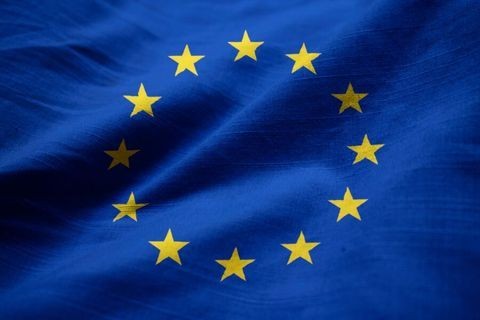U.S. Department of Commerce’s Bureau of Industry and Security Strengthens Antiboycott Regulations
Client Alert | 11 min read | 10.20.22
On October 7, 2022, the U.S. Department of Commerce’s Bureau of Industry and Security (BIS) simultaneously published a final rule strengthening the antiboycott regulations in Part 766 of the Export Administration Regulations (EAR) (the “Final Rule”), as well as a memorandum on the new rule’s implementation (the “Final Rule Memo”), issued by the Assistant Secretary for Enforcement.
Pursuant to the Final Rule, BIS will make three primary changes:
- Enhance penalties for violating the antiboycott regulations and reprioritize violation categories,
- Strengthen the requirements for the settlement agreement process by requiring an admission of conduct, and
- Shift its focus to more directly target non-U.S. subsidiaries of U.S. companies not in compliance.
Background on Antiboycott Rules
Antiboycott rules require U.S. persons (which includes U.S. nationals and permanent residents, domestic concerns, and “controlled in fact” non-U.S. subsidiaries, affiliates, or other permanent foreign establishments of domestic concerns) to refuse participation in unsanctioned boycotts, notably the Arab League’s boycott of Israel, and to report any requests to comply with such boycotts.[1]
In 2007, BIS released a set of penalty guidelines it uses in assessing whether to pursue administrative charges or settle allegations of antiboycott violations. The guidelines list the factors that BIS considers when deciding what level of penalty to seek. Their operation, and changes thereto, are summarized below.
Overview of The Final Rule
BIS’s Office of Anti-boycott Compliance (OAC) explained in the Final Rule Memo that the Final Rule is meant to “enhance compliance, increase transparency, incentivize deterrents, and compel accountability for those who violate [the U.S.’s] antiboycott rules.” It did so with the following key changes.
Specifically, under the 2007 guidelines, BIS categorized violations as Category A, B, or C. The Final Rule changed those categories to better reflect its current thinking as follows:
|
Category |
Previous Category |
2022 Changes |
|
A |
(1) Discriminating against U.S. persons on the basis of race, religion, sex, or national origin (b); |
No change |
|
(2) Refusing to do business or agreeing to refuse to do business—§ 760.2(a); |
(2) Refusing to do business—§760.2(a); | |
|
(3) Furnishing information about race, religion, sex, or national origin of U.S. persons including, but not limited to, providing information in connection with a boycott questionnaire about the religion of employees; |
No change | |
|
(4) Evading the provisions of part 760— §760.4; |
No change | |
|
(5) Furnishing information about business relationships with boycotted countries or blacklisted persons; and |
(5) Furnishing information about associations with charitable or fraternal organizations which support a boycotted country—§760.2(e). | |
|
(6) Implementing letters of credit |
Moved to Category B |
|
Category |
Previous Category |
2022 Changes |
|
B |
N/A |
(1) Knowingly agreeing to refuse to do business—§760.2(a); |
|
(2) Requiring, or knowingly agreeing to require, any other person to refuse to do business—§760.2(a); | ||
|
(3) Implementing letters of credit— §760.2(f); | ||
|
(1) Furnishing information about associations with charitable or fraternal organizations which support a boycotted country— §760.2(e); and |
(4) Furnishing information about business relationships with boycotted countries or blacklisted persons—§760.2(d); and | |
|
(2) Making recordkeeping violations—part 762. |
No change – now (5) |
|
Category |
Previous Category |
2022 Changes |
|
C |
Failing to report timely receipt of boycott requests—§760.5. |
No change |
Additionally, OAC highlighted the change in potential penalties. Specifically, the maximum penalties previously were $11,000 per violation (before March 9, 2006) and $50,000 per violation committed on or after March 9, 2006, (2) denial of a party’s export privileges under EAR and, (3) exclusion from practice.
Now, after export control reform in 2018, OAC has authority to pursue penalties that roughly resemble those pursued in other export controls or sanctions contexts: ~$329,000 or twice the value of the underlying transaction, or $1 million fine and/or 20 years in prison (for criminal activity). OAC’s supporting memorandum made clear that “All Category A violations will be subject to the maximum penalty as the starting point in our penalty calculus.” In other words, we may start to see total penalty numbers substantially in excess of where they have historically been.
Under the 2007 guidelines, U.S. persons were allowed to settle and self-disclose their violations in exchange for mitigating factors in determining penalties and lesser administrative sanctions. In the settlement agreement, there was no requirement for U.S. persons to publicly outline their wrongdoing and violations of the rules.
The antiboyctt rules have always had an extraterritorial reach, asserting jurisdiction directly over non-U.S. entities that are controlled in fact by U.S. parent companies. However, in its messaging in support of the Final Rule, OAC articulated that its enforcement focus had largely been on the U.S. parties receiving or processing boycott requests. Now, OAC wants to pivot that focus to the parties actually making the requests. In some instances, those parties may not be subject to U.S. jurisdiction, so OAC’s increased attention will be through diplomatic outreach. However, in some cases those parties will be subject to U.S. jurisdiction directly—i.e., either they are U.S. legal entities or are controlled in fact by U.S. persons; if so, OAC will be bringing direct enforcement actions against them.
Key Takeaways
- Despite some progress through the Abraham Accords and the rapprochement between the United Arab Emirates and Israel, OAC is renewing its enforcement focus on the antiboycott rules.[2]
- OAC’s civil penalty authorities were substantially expanded in 2018, and are now to ~$328,000 or twice the value of the transaction (increased from the previous $50,000 per violation). OAC will now be starting from that maximum penalty in calculating its potential penalties for many types of violations (so-called Category A violations).
- Settlements will now require public admissions of a violation, but on that basis should include a more detailed statement of facts designed to provide additional guidance to industry.
- Non-U.S. parties with U.S. parents should be more vigilant of their compliance with these rules since there will be an enhanced focus on the compliance of these types of parties, including, in particular, those directly subject to OAC’s jurisdiction (e.g., non-U.S. entities that are controlled in fact by U.S. parent companies).
[1] The rules were created pursuant to the Export Administration Act of 1979, and expanded in 2018, when the Antiboycott Act (2018) amended the Export Administration Act of 1979, extending the prohibition. Specifically, the rules were written to oppose the UN’s Human Rights Counsel urge for countries to pressure their companies to divest from and break ties, including contracts, with Israel.
[2] In August 2020, the United Arab Emirates (UAE) announced that it was formally terminating its participation in the Arab League’s boycott of Israel and the UAE, Israel, and the United States signed the Abraham Accords in September 2020, which established diplomatic and commercial relations between the UAE and Israel. Following the signing of the Abraham Accords, the EAR was updated to reflect that information received, positions, and agreements made by the UAE are presumed to not be related to the boycott. UAE was officially removed from the list of "boycotting countries" as published in the Federal Register on April 8, 2021.
Contacts

Partner
He/Him/His
- Washington, D.C.
- D | +1.202.624.2500
- Washington, D.C. (CGA)
- D | +1.202.624.2548
- Boston
- D | +1.781.795.4700
Insights
Client Alert | 14 min read | 12.22.25
European Commission Proposes Biotech Act to Boost Health Biotechnology in the EU
On December 16, 2025, the European Commission published its proposal for a regulation establishing a European Biotech Act to strengthen the EU's biotechnology and biomanufacturing sectors with a primary focus on health.
Client Alert | 11 min read | 12.22.25
European Commission Proposes Simplifying the Rules on EU Medical and In-Vitro Diagnostic Devices
Client Alert | 3 min read | 12.22.25
Second Circuit Expands District Court Review of Magistrate Judge Report and Recommendations
Client Alert | 2 min read | 12.19.25





